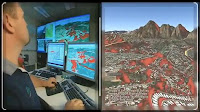ESRI Education Manager, Joseph Kerski, wrote an article about the five skills or abilities needed for a successful career in the field of GIS. To-5 expertise or skill is 2 or 3 of them are also must-have skills for successful careers in other fields. So what skill or skills are they?
The first skill for a successful career in the field of GIS is curiosity or the curiosity / wonder is great. They are a successful career in the field of GIS is not only curious about the world of geospatial technologies, but they also want to know about the world itself. They reflect the spatial relationship to work in a local phenomenon to a global scale, ranging from demographics, land use and traffic patterns within their own communities to natural hazards, biodiversity, and climate around the world. This triggers the curiosity that is often necessary to solve the problem by using GIS.
The second skill is the ability to work with data. They are a successful career in the field of GIS has developed the skills to think critically about the data. They not only know where to find data, but with a very good understanding of metadata so that they know the benefits and limitations to work with any kind of data type. They understand well what is the most effective measures to collect, analyze, and display geographic data in the application / GIS software.
The third skill for a successful career in the field of GIS is a basic understanding of geography. GIS practitioners must know the fundamentals behind all spatial phenomena, including map projections, datums, topological relations, spatial data models, database theory and methodology, ways to classify data, how to effectively use spatial statistics and geoprocessing methods, and much more the other.
The ability to adapt quickly is the fourth skill necessary to succeed in the field of GIS. Now this geospatial technology is developing very fast, as fast as other technologies. Cloud computing technology, the choice of GIS data access via the desktop platform or mobile device, access data online is the latest technological developments, as a professional career in the field of GIS, adaptation to technology and flexibility in the application of technology should be a must-have their own skills. This also applies to a successful career in other technologies. Inevitably, they must not only willing to change, but accept and embrace change as an important part of their careers. They are lifelong learners.
The fifth skill is good communication skills. They are a successful career in the field of GIS know how to use GIS and other presentation tools to communicate their work to various audiences. They understand well how to effectively use elements of maps, but they also knew how to communicate the results of their analysis in oral and written reports, visually via video, face to face, online, and through other means.









